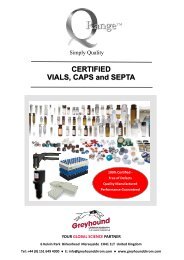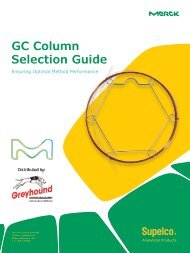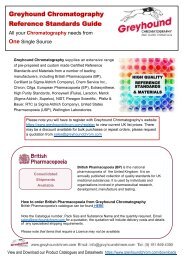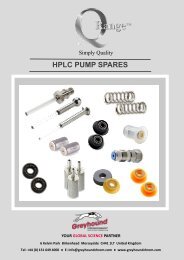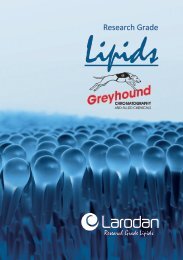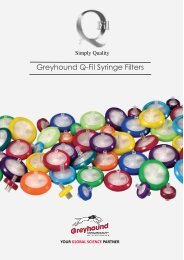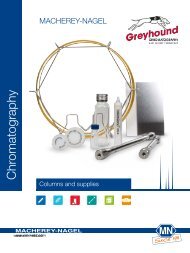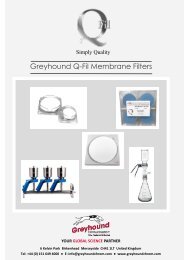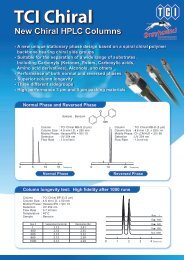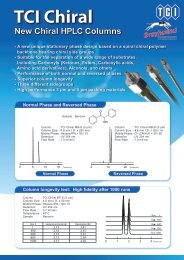You also want an ePaper? Increase the reach of your titles
YUMPU automatically turns print PDFs into web optimized ePapers that Google loves.
NEEDLES | INTRODUCTION<br />
Choosing the Appropriate Gauge (Cont.)<br />
Calculating Needle Dead Volume<br />
The dead volume and dimensions of the needle tubing are<br />
listed in the Gauge Index (page 119). The dead volume can<br />
be calculated by the equation (inner diameter/2) 2 (π)(needle<br />
length). Add this to the dead volume of the needle hub to get<br />
the needle’s total dead volume. For a Metal or Kel-F Luer Lock<br />
Needle connected to a <strong>Hamilton</strong> syringe add 10 µL, and for a<br />
Removable Needle there is no additional dead volume.<br />
Considerations for <strong>Syringes</strong><br />
500 µL and Larger<br />
For syringes of this size, flow rate and backpressure are the<br />
biggest considerations. It is possible to use a 27 gauge and<br />
smaller needle with these syringes. However, the force to<br />
press the plunger will increase, and the dispense rate must<br />
be slow. When possible, it is always recommended to use<br />
the thin-walled tubing in lieu of the “s” gauge tubing.<br />
Small Gauge Needle Bending with Length<br />
As needle diameter decreases, the needle becomes less<br />
rigid. For applications that require a small gauge needle but<br />
still need rigidity for penetration, it is recommended to order<br />
the shortest needle that is still suitable for the application.<br />
The Neuros syringe on page 58 may also be an option.<br />
It has a protective sleeve to improve the rigidity of a small<br />
gauge needle.<br />
Using 34 Gauge Needles<br />
A 34 gauge needle is significantly smaller than a 33 gauge<br />
needle. For some applications the smaller size is a real<br />
advantage but has inherent complications. 34 gauge tubing<br />
requires special cutting tools to ensure the tubing is not<br />
crimped shut. Due to this limitation the needles are only<br />
available in restricted lengths and point styles. The small inner<br />
diameter (ID) results in a needle more prone to clogging, and<br />
cleaning wires are not available for this size. The small ID<br />
also makes it difficult to aspirate water with a fitted Microliter<br />
syringe; therefore, a Gastight syringe must be used with a<br />
34 gauge needle.<br />
101



